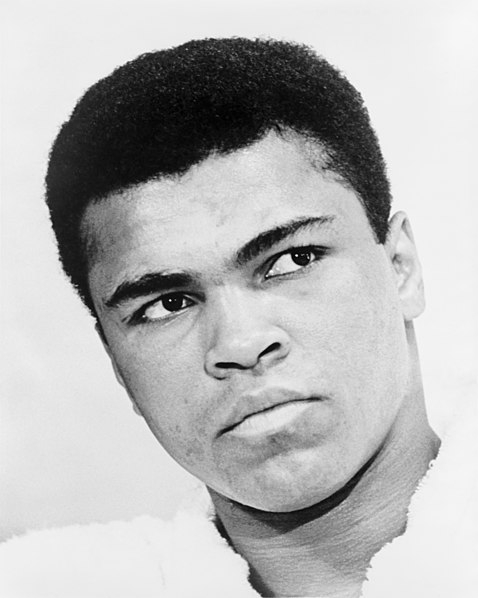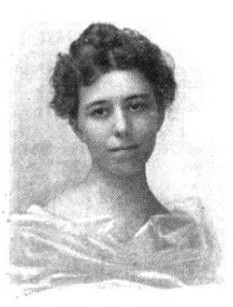
Image from National Women's History Museum
From The
Kentucky Encyclopedia -
One of the controversial figures in
the national women's rights movement, Laura Clay was born at White Hall, her family's
estate near Richmond,
Kentucky, on February 9, 1849. Her parents were Cassius M. Clay , the
noted antislavery activist, and Mary Jane (Warfield) Clay, both of prominent Bluegrass families. Laura
Clay was educated at Lexington's
Sayre School, where she
graduated in 1865. She then spent a year at Miss Hoffman's finishing school in
New York City and later studied at the universities of Michigan and Kentucky for short
periods. She supported herself and financed her long public career with her
income as a "practical farmer," managing a three-hundred-acre farm in
Madison County, which she
leased from her father in 1873 and owned after his death in 1903.
Clay's commitment to women's rights
arose from her parents' bitter separation in 1869 and divorce in 1878, when she
became aware that the property and legal rights of Kentucky women, especially
those married, were woefully unprotected. After considering careers in
teaching, law, and the missionary field, Clay decided to devote her life to the
woman's movement. In 1888 she took the leading role in organizing the Kentucky Equal Rights Association
(KERA) , which she served as president until 1912. Although the
growth of the association was slow, its lobbying in Frankfort by the mid-1890s
had won a number of legislative and educational victories, including protection
of married women's property and wages, a requirement for women physicians in
state female insane asylums, and the admission of women to a number of male
colleges.
As an officer in both the Women's
Christian Temperance Union and the Kentucky Federation of Women's Clubs
, Clay persuaded the groups to join the KERA in advocating
additional benefits for women and children at the turn of the century. Their
efforts secured legislation that provided for a women's dormitory at the University of Kentucky ,
established juvenile courts and detention homes, and raised the age of consent
from twelve to sixteen years. Clay and other women activists saw the vote as
the capstone of their movement. With the state legislature's grant of school
suffrage in 1912, they won a partial victory.
During the 1890s, Clay became the
best-known southern suffragist and the South's leading voice in the councils of
the National American Woman Suffrage Association (NAWSA). Her efforts were
largely responsible for the establishment of suffrage societies in nine of the
former Confederate states. Clay addressed constitutional conventions in
Mississippi and Louisiana and managed an unsuccessful NAWSA effort to add
women's suffrage to the South Carolina constitution of 1895. In 1896 Clay was
elected auditor of the NAWSA, a post she held for fifteen years. She maintained
a position of moderation and conciliation on the NAWSA official board in
matters of both race and personality clashes. As an unpaid NAWSA field worker,
she also directed suffrage campaigns in Oregon, Oklahoma, and Arizona. While
chair of the association's membership committee, she introduced recruiting
innovations that almost tripled the number of members, from 17,000 in 1905 to
45,501 in 1907. In 1911 Clay lost her bid for reelection as auditor, following
a dispute between the southern and western suffragists and those from the East
over administrative and organizational matters. Contrary to some accounts,
neither the race question nor the issue of the federal amendment versus the
state route to enfranchisement figured in this dispute. Despite her removal
from the official board of the NAWSA, Clay for a number of years chaired
association committees, contributed to fund drives, and worked in state
suffrage campaigns.
In 1916 Clay was elected
vice-president-at-large of a new organization, the Southern States Woman
Suffrage Association, founded to win the vote through state enactment. Clay saw
this organization as an auxiliary, not a rival, of the NAWSA, whose activities
she continued to support. It was not until 1919, when the U.S. Congress enacted
the Nineteenth Amendment, that Clay withdrew from the NAWSA, turned her
energies to securing a state suffrage bill in Kentucky, and began openly to
oppose the federal bill. She based her opposition to it on states' rights, asserting
that the Nineteenth Amendment was a vast and unneeded extension of
federal power. A product of her time, Clay was a believer in Anglo-Saxon
superiority but was paternalistic, rather than Negrophobic, in her attitudes.
After the ratification of the
suffrage amendment, Clay continued to work for women's rights and the
involvement of women in civic life. She helped organize the Democratic Women's
Club of Kentucky, served as a delegate to the Democratic National Convention in
1920, and ran unsuccessfully for the state Senate in 1923. A firm believer in
women's church rights, she was instrumental in winning vestry and synod
eligibility for women in the Lexington
diocese of the Episcopal church. In the 1928 presidential campaign, she made a
number of speeches for the Democratic
nominee, Alfred E. Smith, and vigorously condemned national prohibition. When
Kentucky voted for the repeal of prohibition in 1933, Clay served as a member
and temporary chair of the ratifying convention in Frankfort. Clay died on
June 29, 1941, and was buried in the Lexington Cemetery .
PAUL E.
FULLER, Entry Author
Selected
Sources from UK Libraries:
Totenberg, Nina., Heather. Lyons, Chris. Blair, and Little City Media Workshop. Laura Clay, Voice of Change a Documentary Film. Lexington, Ky.: Little City Media Workshop, 1992.
SC-V4082, Young Media Library
Goodman, Clavia. Bitter Harvest; Laura Clay's Suffrage Work. Lexington [Ky.: Bur, 1946. Print. Kentucky Monographs. 3.
B C5784g, Special Collections Research Center - Biography Collection
Clay, Laura. Laura Clay Papers, 1882-1941, 1906-1920 (bulk Dates) (1882). Print.
PA46M4, Special Collections Research Center
 Image from songwritershalloffame.org
Image from songwritershalloffame.org



